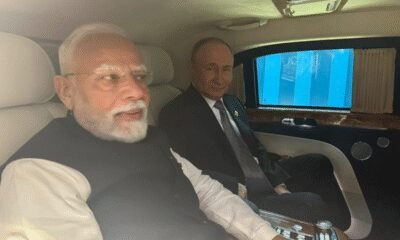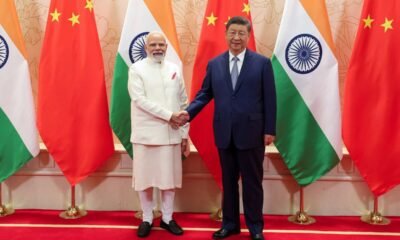Travel Guides & Articles
Arunachal Pradesh Tourism Minister Unveils India International Travel Mart (IITM) in Bengaluru, Spotlighting India’s Diverse Tourism Landscape, Cultural Richness, and Emerging Global Travel Trends
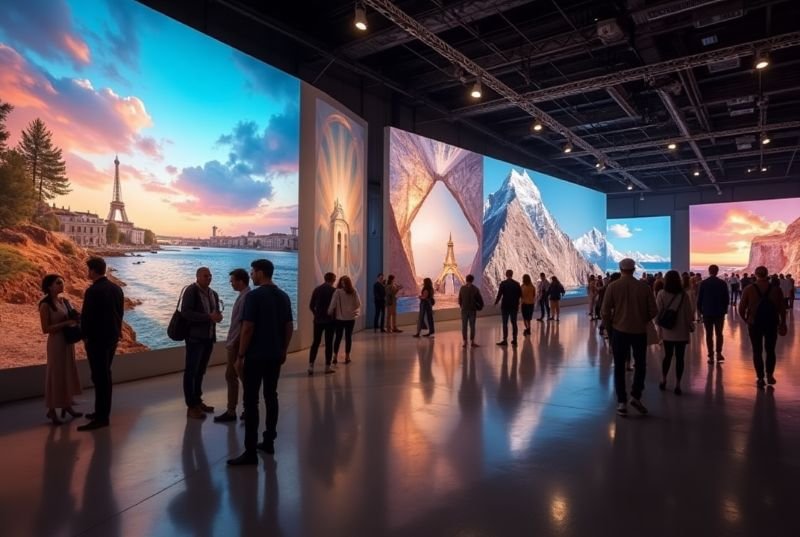
Thursday, July 24, 2025
Bengaluru Hosts the 25th Edition of the India International Travel Mart (IITM)
In late July 2025, the bustling city of Bengaluru became the focal point for the travel and tourism world, as it hosted the 25th edition of the India International Travel Mart (IITM). This major event, which began on July 24 at Tripura Vasini in the iconic Palace Grounds, ran for three days. It was expected to draw tourism professionals, stakeholders, and curious travelers from across the globe to experience India’s rich tourism offerings. With a lineup of 800 exhibitors from 25 Indian states and 20 international destinations, this year’s fair has become a key milestone in India’s efforts to enhance its position in the global tourism arena.
Arunachal Pradesh Seeks to Elevate Its Tourism Profile
At the inauguration of the fair, Pasag Dorjee Sona, the Tourism Minister of Arunachal Pradesh, made a compelling case for his state’s tourism potential. He explained that Arunachal Pradesh is making tourism a cornerstone of its development strategy. Minister Sona emphasized that tourism has a vital role to play in bringing both economic benefits and peace to the region, while fostering a greater understanding of the state’s cultural and natural heritage. He acknowledged that while many states in India are focusing on tourism, Arunachal Pradesh needs to actively engage with new markets to ensure growth. The IITM was viewed as an excellent opportunity to reach out to global travelers eager to explore lesser-known destinations in North-East India, which boast unique landscapes, wildlife, and traditions.
Important Participants Converge to Support the Event
The event was attended by numerous influential figures from both the government and private sectors, including Dr. R. Rajendra, Director of the Department of Tourism, Karnataka, and Sri. Syamaraju, President of the Federation of Hotel and Restaurant Associations of India. Their presence underscored the importance of the IITM not only as a platform for promoting tourism within Karnataka but also as a means to highlight India’s attractiveness as a global tourism hub. Together with Sri. Prashant Shankhinamath, Managing Director of Jungle Lodges & Resorts Limited, they reinforced the collaboration between the state government and the private sector, which is essential to attracting both domestic and international tourists.
IITM: India’s Premier Travel Fair
IITM 2025 stands as a beacon of India’s travel and tourism industry, bringing together professionals from various sectors such as hospitality, leisure, adventure, and destination marketing. This year, the fair attracted exhibitors representing a diverse range of Indian states, as well as international destinations eager to tap into India’s vast travel market. The IITM serves as a meeting point for corporate buyers, travel agents, and individual travelers who are looking for new and exciting travel experiences. The fair highlights a wide range of options, from spiritual and cultural tourism to wildlife and adventure travel, showcasing how diverse the travel landscape in India has become.
Diverse and Immersive Travel Experiences on Display
One of the major attractions of IITM 2025 was the vast variety of travel experiences it offered. Among the top highlights were destinations in India’s North-East, where tourists could embark on adventures such as seeing the Indian rhinoceros in its natural habitat. Another key draw was Rajasthan, known for its vibrant festivals that celebrate its rich cultural heritage. Furthermore, Karnataka presented itself as a must-visit destination for travelers seeking historical and cultural insights, with its famous heritage sites, temples, and palaces taking center stage.
As immersive travel gains traction globally, this year’s IITM reflected the growing desire among travelers to connect on a deeper level with the places they visit. Instead of just sightseeing, many travelers are now looking for authentic experiences where they can engage with local communities, learn about cultural practices, and explore nature in a more meaningful way.
Karnataka Takes Center Stage: Cultural Tourism Promoted
One of the key themes at the fair was the spotlight on Karnataka, particularly its Mysuru Dasara Festival. Known for its spectacular celebrations, the festival exemplifies Karnataka’s rich cultural heritage. In addition to the festival, the fair showcased Karnataka’s archaeological treasures and historical landmarks. The state’s deep historical roots, expressed through its temples, forts, and palaces, have made it a prime destination for cultural tourism. As Karnataka continues to grow in popularity among international travelers, the fair positioned it as an ideal destination for those seeking a rich, cultural experience, especially in light of the increasing global interest in history and heritage.
Business and Networking Opportunities at IITM
The IITM serves not only as a tourism exhibition but also as a dynamic platform for the business side of travel and tourism. This year, it provided an excellent opportunity for professionals to connect, share ideas, and explore new business ventures. Networking was one of the key components, allowing hotels, tour operators, and other stakeholders to form valuable partnerships, both domestically and internationally. Through these face-to-face interactions, businesses had the chance to engage with clients and partners, expand their reach, and discuss the future of tourism.
The growing presence of technology companies and international tourism bodies at the fair reflects the importance of staying ahead of digital trends and fostering cross-border partnerships. This will undoubtedly impact the travel industry in the coming years, as global connectivity continues to increase and new trends shape the travel preferences of tomorrow’s tourists.
Bengaluru: An Ideal Host for IITM
Bengaluru, with its status as a global tech hub, was the perfect venue for an event of this magnitude. Known for its modern infrastructure, cosmopolitan nature, and highly educated population, the city has become a key destination for both domestic and international travelers. Its growing global appeal made it a fitting location for the IITM, as it is a city where technology and culture coexist, attracting a diverse audience with varied interests. The city’s multicultural atmosphere and easy connectivity have helped make it a prime choice for international events like IITM, positioning Bengaluru as a gateway to India for international travelers.
India’s Growing Influence in the Global Tourism Landscape
The IITM 2025 was more than just a local event; it underscored India’s growing influence in the global tourism sector. As the tourism industry continues to evolve, India is rapidly becoming a key player in the international tourism market. This year’s fair was not only about showcasing India’s diverse tourism offerings but also about connecting with global tourism trends. One of the primary discussions at the event revolved around the rising importance of responsible tourism. Today’s travelers are increasingly concerned with the environmental and social impacts of their travels. This trend was evident at the fair, where exhibitors highlighted sustainable tourism practices, such as eco-friendly hotels, conservation initiatives, and community-based tourism.
The rise of sustainable travel and the growing focus on cultural preservation are set to have significant global effects. Tourists and businesses alike are seeking destinations that emphasize responsible tourism, making events like the IITM critical for shaping the future of travel.
Shaping the Future of Global Travel
The event’s lasting impact will extend far beyond Bengaluru and India. As the global tourism industry continues to recover and grow, it will be influenced by the discussions, partnerships, and trends that emerged at the IITM 2025. Tourism businesses will have the chance to tap into new markets and adapt to emerging trends, including an increasing demand for personalized and immersive travel experiences.
The fair also highlighted the evolving nature of tourism, where cultural exploration and authenticity are becoming key priorities for travelers. As a result, destinations that offer unique, immersive, and responsible travel experiences are set to gain prominence in the global tourism market.
The Global Significance of IITM 2025
The IITM 2025 in Bengaluru has become a defining moment for the travel industry, offering a clear glimpse of the future. By showcasing India’s rich tourism potential and its emerging global influence, the fair has set the stage for future developments in the global travel and tourism industry. It is clear that IITM will continue to play a crucial role in fostering international collaboration, sustainable tourism practices, and new business opportunities across the globe.
Travel Guides & Articles
Modi and Putin affirm special relationship as India faces steep US tariffs over Russian oil imports : NPR
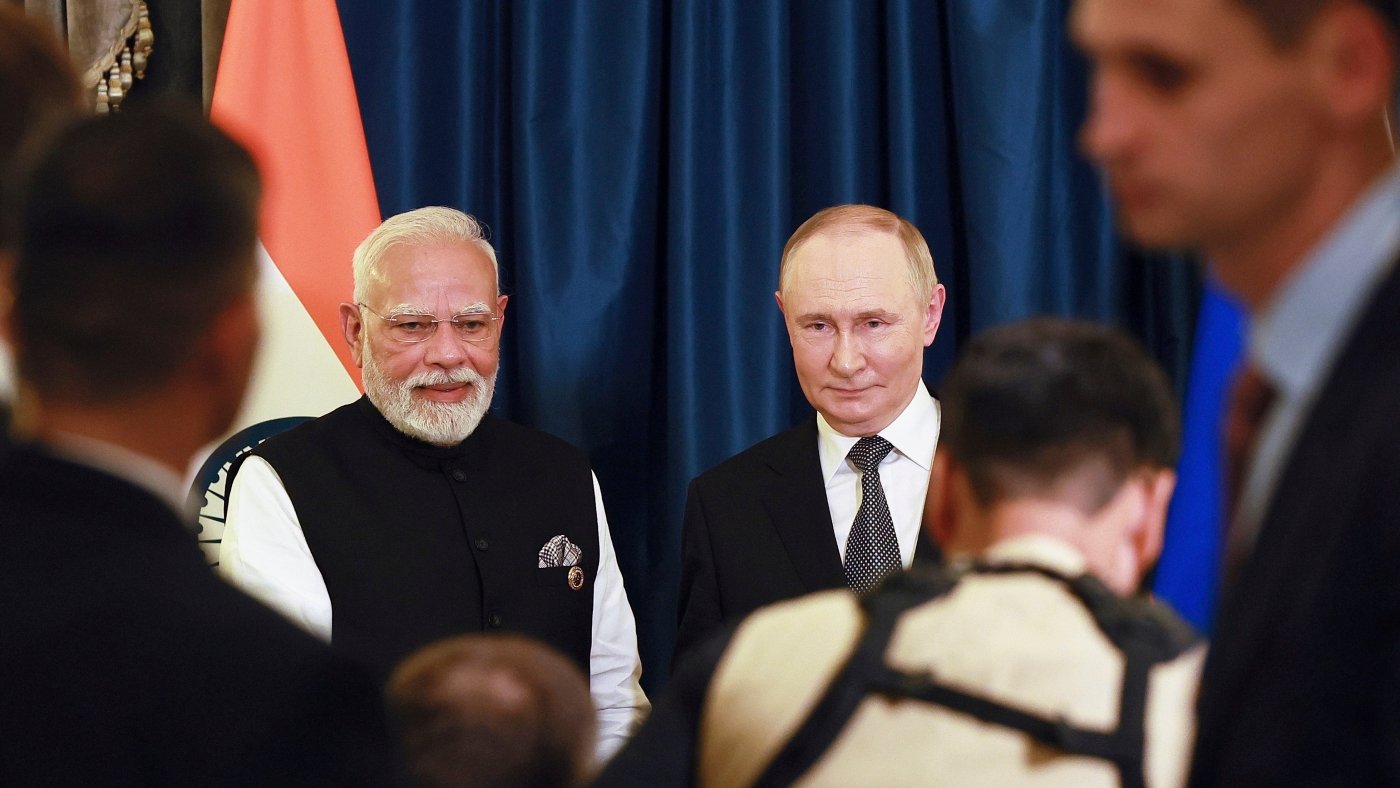
Indian Prime Minister Narendra Modi, left, and Russian President Vladimir Putin pose during their meeting on the sidelines of the Shanghai Cooperation Organization (SCO) summit in Tianjin, China, Monday, Sept. 1, 2025.
Vladimir Smirnov/AP/Pool Sputnik Kremlin
hide caption
toggle caption
Vladimir Smirnov/AP/Pool Sputnik Kremlin
TIANJIN, China — Indian Prime Minister Narendra Modi and Russian President Vladimir Putin met on the sidelines of a regional summit in China on Monday in a show of deepening ties when New Delhi’s relations with Washington are strained over the purchase of Russian oil.
The two leaders held talks after attending the key session of the Shanghai Cooperation Organization gathering in the port city of Tianjin, where discussions focused on regional stability, bilateral trade and energy cooperation.
In his remarks to open the talks, Modi termed the partnership with Moscow as “special and privileged.” Putin addressed Modi as a “dear friend” and hailed Russia’s ties with India as special, friendly and trusting.
“Russia and India have maintained special relations for decades. Friendly, trusting. This is the foundation for the development of our relations in the future,” Putin said.
Putin plans to travel to India in December for the 23rd India-Russia annual summit, according to his foreign affairs adviser, Yuri Ushakov.
Relationships on display
Modi used the SCO meeting to welcome the initiatives aimed at halting the conflict between Russia and Ukraine and called on the stakeholders to move forward constructively.
“To end the conflict soonest and establish peace permanently, we need to find out a way. It’s a call of the entire humanity,” Modi said.
Putin was accompanied by a large delegation that included top government officials. Russian state media reported that before sitting down for their formal meeting, Putin and Modi spoke one-on-one for almost an hour in a Russian-made limousine that Putin regularly takes on foreign trips.
Moments before the leaders lined up for a group photo, Modi was seen clasping Putin’s hand with the gusto of an old friend, bursting into his trademark hearty laughter. The moment was infectious as Putin grinned and chuckled, while Chinese President Xi Jinping gave a measured smile. The trio, ringed by watchful interlocuters, chatted animatedly for a few seconds.
Modi met Xi ahead of the opening of the summit Sunday and the two leaders pledged to resolve their border differences and bolster cooperation.
Washington pushing together China, Russia and India
Monday’s bilateral meeting between Modi and Putin carried added significance by coming days after U.S. President Donald Trump imposed an additional 25% tariffs on Indian imports, raising the total duties to a steep 50%, in retaliation for India’s continued purchases of discounted Russian oil.
Washington has repeatedly warned New Delhi against buying Russian crude, which it said was partly keeping Moscow’s revenues afloat to fund the Ukraine war. India has defended its imports as essential for meeting the growing energy needs of its 1.4 billion people.
Analysts said Trump’s steep tariffs and the tone coming from the White House have pushed New Delhi closer to China and Russia.
“While India-China reengagements started much before Trump, his policies are accelerating a process whereby India seems to be working much more closely with China and Russia to push back against economic unilateralism it is witnessing from the U.S.,” said Harsh Pant, vice president of foreign policy at New Delhi based think tank the Observer Research Foundation.
Modi travelled to Russia twice last year. The first was a visit to Moscow for talks with Putin in July, which was his first trip to Russia since the full-scale invasion of Ukraine by the Kremlin’s forces in February 2022. He then traveled to Kazan in October for the summit of the BRICS bloc of developing economies.
Trump’s reaction
As Xi, Putin and Modi showed extraordinary unity, Trump on Monday continued to jab at New Delhi.
As the summit wrapped up, Trump charged in a social media post that historically the U.S.-India trade relationship “has been a totally one sided disaster!” Trump also bristled about India surging its Russian oil purchases and signaled no trade deal with New Delhi is in sight.
“They have now offered to cut their Tariffs to nothing, but it’s getting late,” Trump said in the posting on his Truth Social platform. “They should have done so years ago. Just some simple facts for people to ponder!!!”
SCO nations share a history of business partnerships
Russia has had strong ties with India since the Cold War, and New Delhi’s importance as a key trading partner has grown since the war between Moscow and Ukraine.
China and India have become key buyers of Russian oil after the West shunned Russian exports to punish Moscow.
India historically bought most of its crude from the Middle East, but the world’s third-largest crude importer after China and the U.S. has started buying Russian oil available at discounted rates. Russia now accounts for around 37% of India’s total oil imports, according to analysts and Indian officials.
Trade between India and Russia has sharply increased in recent years, reaching a record $68.7 billion in the 2024-25 financial year. Imports from Russia reached around $64 billion and exports from India totaled about $5 billion, according to Indian government data.
The two nations aspire to bolster trade to $100 billion by 2030.
Modi’s meeting with Putin underscored New Delhi’s stance that India prized its old and reliable strategic partners and has sufficient strategic autonomy in its foreign policy to maintain and strengthen its multi-dimensional partnership, said Sreeram Sundar Chaulia, an international affairs expert at New Delhi’s Jindal School of International Affairs.
At the same time, the Indian government hopes the present rough weather between India and the U.S. is a temporary aberration, Chaulia said.
“Then, India can return happily to having the Russian cake and eating the American pie as part of its multi-alignment strategy,” Chaulia said.
Travel Guides & Articles
Fatehpur Sikri, India, travel guide: Seven highlights to see

Seven wonders within Fatehpur Sikri, India
This monumental Mughal capital 37 kilometres outside Agra was founded in 1571 but lasted scant decades. The magnificently mournful ruins are one of India’s most underrated sights.
1 Make a grand entrance through Victory Gateway
As you lurch out of Agra, dodging cars and camel carts, your first sight of this ruined city is an immense hilltop gateway, one of the world’s biggest, wobbling like a mirage in the heat. Victory Gateway was built in 1602 from red sandstone and white marble to commemorate Emperor Akbar’s military triumphs, although its Persian inscription warns the world doesn’t last. This by itself qualifies as a mighty monument, and the views are splendid.
2 Pause in admiration inside the mosque
Step through the gateway into the courtyard of the Friday Mosque and you get the first impact of this tremendous ensemble. Everything is built of red sandstone, everything outsized, and yet the decorative detail – window frames, balconies, roof brackets – wonderfully carved. The mosque is one of India’s finest and largest and centres on the tomb of a Sufi, inlaid with mother-of-pearl. Local women come to tie strings on the marble lattice in hope of being granted children.
3 Check out the architecture in the Audience Hall
This gloriously startling building in the royal quarter is where Akbar consulted advisers. The Diwan-i-Khas has wall recesses that served as bookshelves for royal documents and texts. However, your eyes will surely be on the enormous and wildly ornate octagonal pillar of the main hall, which rises from the centre of the room like the handle of an umbrella and props up an elevated walkway that resembles the balcony in an opera house.
4 Look up in the Imperial Treasury
Fatehpur Sikri shows wide Hindu, Islamic and Persian influences but this genius building next to the Audience Hall takes inspiration from Jain temple architecture and decorative sculpture. Stone safes are concealed in the walls, but gaze up: the brackets that hold up the ceiling are embellished with mythical elephant-headed sea monsters, said to guard treasures in the depths of the ocean. In the fields behind, don’t miss the odd-looking spiky tower erected in memory of Akbar’s beloved elephant Hiran.
5 Enjoy the faded frescoes in Mariam’s House
The harem complex has several fine pavilions, some showing Turkish influences and others covered with depictions of swans and horses. The carvings and fretwork are so fine in places you could mistake sandstone for wood. If you’re pressed for time, head straight to Mariam’s House, perhaps the best example. As a bonus, it has bright and sometimes surreal gold-tinted frescoes – look out for the diaphanous woman riding a gigantic parrot.
6 Wander through the other imperial quarters
This is the most impressive part of Fatehpur Sikri, erupting in columns, latticed screens and elaborately decorated architectural elements, and graced with ornamental pools and clipped gardens. Persian verses loop across the emperor’s bedroom or House of Dreams, although judging from his innumerable concubines Akbar spent scant time on sleep. The pool below the elevated kiosk cooled the bedchamber. This is just one of numerous buildings that might take an hour or two to admire.
7 Close your guidebook and get lost
Fatehpur Sikri was planned in the smallest detail: servants’ quarters, lavatory blocks, fountain drainage, masonry rings to hold silk canopies for courtyard shading. Take time to inspect the detail and soak up the melancholy magnificence away from the main visitor axis. Birds wheel overhead and squirrels sun themselves on walls. In the late afternoon the sandstone turns crimson, then orange and subtle pink before the light fades on this abandoned city of lost dreams.
The writer travelled as a guest of Incredible India incredibleindia.gov.in and Malaysia Airlines malaysiaairlines.com
Sign up for the Traveller Deals newsletter
Get exclusive travel deals delivered straight to your inbox. Sign up now.
Traveller Guides
From our partners
Travel Guides & Articles
Heavy rain alert in Delhi–Gurugram: IMD issues an orange alert; travel and safety advisory |
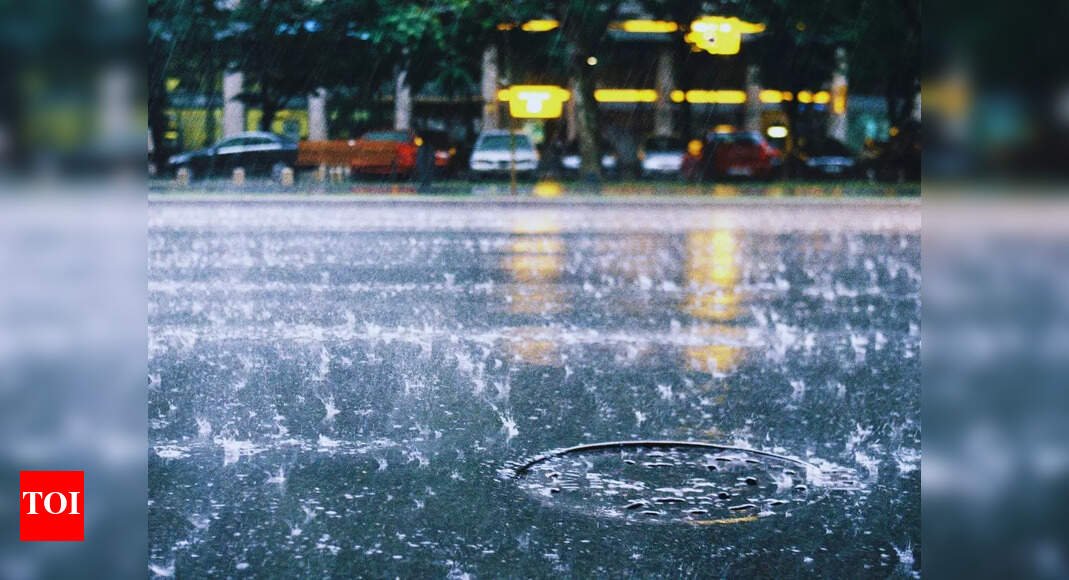
In a recent update, Delhi and its surrounding NCR cities, including Gurugram, Noida, and Faridabad, have received intense rainfall. The India Meteorological Department (IMD) has issued an orange alert for Delhi while a warning of very heavy rainfall and thunderstorms has been issued for Gurugram.Keeping the current situation in view, the District Disaster Management Authority has issued a travel advisory for Gurugram for 2nd September 2025. It reads:On September 1, 2025, Gurugram recorded over 100 mm of rainfall between 3 PM and 7 PM. The India Meteorological Department (IMD) has issued an Orange Alert, forecasting heavy to very heavy rainfall on September 2, 2025.In light of this warning:Corporate offices and private institutions in Gurugram district are advised to ask employees to work from home.
All schools in the district are directed to conduct online classes on September 2, 2025.On the other hand, Delhi too is experiencing non-stop rains which have caused waterlogging and long traffic across roads. Authorities are closely monitoring the Yamuna River too, which is expected to rise close to the danger mark of 206 metres on Tuesday. Low-lying areas are particularly vulnerable to flooding.India Meteorological Department forecastIn the present scenario, the India Meteorological Department (IMD) has issued an orange alert for Delhi for heavy rainfall. Similar alerts have been issued for NCR regions including Noida, Faridabad, and Gurugram. A yellow warning has been issued for Ghaziabad.Not only this, IMD has cautioned that northern India may experience heavy rainfall at least until September 5 especially for Uttarakhand, Himachal Pradesh, and Punjab which are under red and orange alerts.Travel disrupted, airlines issue advisoryAirlines such as IndiGo, Air India, SpiceJet, and Akasa too have issued warnings and advised people of possible delays and cancellations due to poor visibility. Passengers are advised to check flight status before leaving the house.Advisory
It is advised to avoid flood-prone zones, underpasses, and Yamuna ghats.Use public transport.For those in Gurugram, work from home is strongly recommended on September 2 as safety of people is more important.Keep a check on official IMD and local weather updates before planning anything.
-

 Business3 days ago
Business3 days agoThe Guardian view on Trump and the Fed: independence is no substitute for accountability | Editorial
-
Tools & Platforms3 weeks ago
Building Trust in Military AI Starts with Opening the Black Box – War on the Rocks
-

 Ethics & Policy1 month ago
Ethics & Policy1 month agoSDAIA Supports Saudi Arabia’s Leadership in Shaping Global AI Ethics, Policy, and Research – وكالة الأنباء السعودية
-

 Events & Conferences3 months ago
Events & Conferences3 months agoJourney to 1000 models: Scaling Instagram’s recommendation system
-

 Jobs & Careers2 months ago
Jobs & Careers2 months agoMumbai-based Perplexity Alternative Has 60k+ Users Without Funding
-

 Funding & Business2 months ago
Funding & Business2 months agoKayak and Expedia race to build AI travel agents that turn social posts into itineraries
-

 Education2 months ago
Education2 months agoVEX Robotics launches AI-powered classroom robotics system
-

 Podcasts & Talks2 months ago
Podcasts & Talks2 months agoHappy 4th of July! 🎆 Made with Veo 3 in Gemini
-

 Podcasts & Talks2 months ago
Podcasts & Talks2 months agoOpenAI 🤝 @teamganassi
-

 Mergers & Acquisitions2 months ago
Mergers & Acquisitions2 months agoDonald Trump suggests US government review subsidies to Elon Musk’s companies










